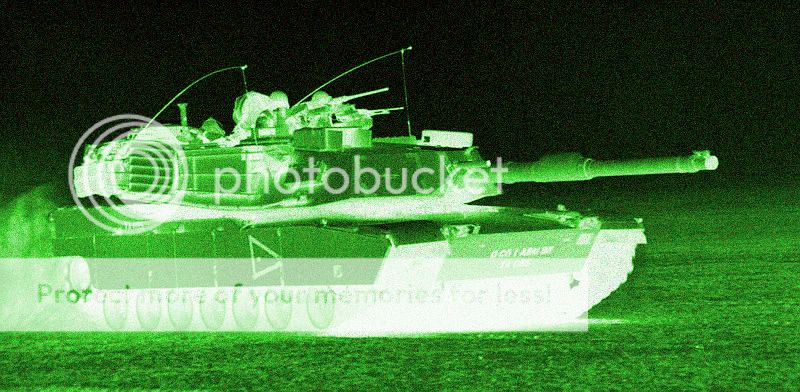In March, a Russian motorist filmed a very unusual, camouflaged tank rolling down a street outside Moscow. Most likely, it was the mysterious T-14 — or Armata — heavy tank, which could represent a major evolution in Russian tank design.
The Kremlin has largely kept the T-14 under wraps, both literally and metaphorically. But we have a pretty good idea of what it can do.
The T-14 weighs around 50 tons and has a 1,500-horsepower gas turbine engine. The tank’s three-man crew operates the vehicle and its weapons from a capsule in the front. It doesn’t lack for protection — packing both composite and reactive armor.
The tank has an unmanned, remote-controlled turret armed with a 125-millimeter smoothbore cannon — which the Russian defense press claims is 15 to 20 percent more accurate than the existing cannon on the T-90, the Russian army’s most advanced current tank.
But like a giant Lego kit for military use, the T-14 is just one part of the Armata Universal Combat Platform — an entirely new generation of armored, tracked military vehicles.
The Kremlin hopes to use the same chassis as the T-14 for as many as 13 different vehicles. This includes an infantry fighting vehicle, a combat engineering vehicle, a tank support combat vehicle and a self-propelled artillery platform.
It’s no surprise that Russian military media and official government news outlets are touting the prowess of the new tank, claiming it will equal the American
M-1 Abrams and the German
Leopard.
That claim could be propaganda. But two things are for certain.
The first is that the Russian army already has a limited number of them for testing. Second, despite current problems with the Russian economy, the project is moving forward.
Using a single chassis for
lots of different armored vehicles is probably a shrewd move, too. The main reason … it’s cheaper that way.
The Kremlin pushed for a uniform tank chassis even during the Soviet era, according to Charles Bartles, a Russia analyst at the U.S. Army’s Foreign Military Studies Office.
“Imagine if you were responsible for maintaining a brigade’s rolling stock and had several different heavy track chassis,” Bartles told War Is Boring. “You would have to keep enough spare parts and folks trained to attach those spare parts for all those chassis.”
For example, Russia duplicated the T-72 tank chassis when developing a number of other vehicles. This kept costs down, and helped simplify maintenance and logistics.
“It is far easier to forecast and provide maintenance when you only need to worry about one chassis type,” Bartles added. “Plus, there are lots of options for ‘robbing Peter to pay Paul.’ It is common practice in most armies including the U.S. to pull parts from lower priority working equipment to make higher priority non-functioning equipment work.”
The Russians — both during and after the Soviet period — were famous for keeping almost
everything in their inventory, no matter how old the equipment. The practice is tolerable for a huge conscript army, but can be a nightmare for supply sergeants.
It wasn’t until the turn of the century that Russia began eliminating some of its oldest and most superfluous weapons and hardware. The purge is part of a massive modernization program that Pres. Vladimir Putin is pursuing for Russia’s military.
Above — a Russian schematic of the new T-14 tank translated into English by a U.S. Army analyst. Illustration via the U.S. Army’s Foreign Military Studies Office. At top — T-14 sighting near Moscow. Capture via YouTube
However, when developing the Armata Universal Combat Platform and the resulting T-14, the Kremlin turned to a familiar source.
The massive industrial firm Uralvagonzavod spent five years designing and developing the T-14 before manufacturing the first batch. Located in the Nizhny Tagil industrial complex in the Central Urals, the same design center developed the T-72 and T-90 tanks, currently in Russia’s arsenal.
The T-14 has a fully automated ammunition loading system, and the targeting system is completely computerized. Besides the cannon, the tank bristles with exterior guns, including a 30-millimeter autocannon for targeting drones or attack helicopters. Lastly, it has a 12.7-millimeter machine gun for anti-personnel use.
Russian media reports claim the Russian army received 20 T-14s for field tests and hands-on training.
In addition, the Russian army moved an unspecified number of T-14s to the Alabino military training grounds, which is home to the 5th Guards Separate Mechanized Infantry Brigade. The facility is 29 miles southwest of Moscow and is traditionally the site for rehearsals held in preparation for the May 9 Victory Day Parade.
The parade in Red Square commemorates the end of World War II, and is often where the Kremlin publicly unveils its latest military hardware.
Some analysts suggest that the Russians could display other uses of the Armata chassis during the parade, including a new model BMP — which is a type of infantry fighting vehicle. But we’ll believe it when we see it.
The Russian army wants to build around 2,300 T-14s by 2020, equipping up to 70 percent of its tank fleet with the new model. The tanks would replace the T-72 and most T-90s.
That’s probably
highly optimistic, especially during an economic recession. But the Kremlin is banking on its economy to eventually improve. And if Russia follows past practices, it will likely put the T-14 up for sale on the export market to help cover domestic production costs.
“As for the export situation, developing a weapon system and then putting it into production is a huge expense,” Bartles said. “Obviously, since Russian military industries are quasi-government, there is a vested interest in generating revenue, but there is also the advantage of economies of scale.”
“Based on previous projects — T-90,
Iskander-E — and the state of the Russian economy, I would say that getting the T-14 into the export market will be a top priority,” he added.

















